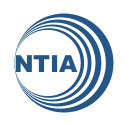New Data for the National Broadband Map
Just over a year ago, we unveiled the National Broadband Map – an unprecedented, interactive map that shows what high-speed Internet services are available in the United States. Powered by a searchable database of more than 20 million records, the map is the most extensive set of U.S. broadband availability data ever published. Our partners in the states collect new data every six months from nearly 1,800 broadband providers nationwide. Just as we did last September, today we are again updating the map with the latest information.
The map has proven a valuable tool to a wide range of stakeholders, including consumers, researchers, policymakers, local planning officials, and application developers. Broadband drives economic growth and innovation – including advances in health care, education, and public safety – so data on America’s broadband capabilities is of increasing importance, especially as we work to close the digital divide.
Our goal remains to provide the most accurate information available. To make this possible, states are using a variety of best practices to validate data before providing it for the map. For example, the Missouri team uses a combination of techniques, including hitting the road to verify infrastructure, and comparing information supplied by broadband providers to third-party datasets, public data, and surveys the team conducts throughout the state. Utah uses similar methods, and has also conducted 9,300 miles of drive tests over in order to assess and validate mobile broadband availability and performance.
You can help too: our crowdsourcing feature enables you to confirm the accuracy of data or let us know if you spot an error. Just type in an address into the search bar and then select “expand all” to see your options for providing feedback. We pass this information back to the states to help with future data collections.
As always, we are interested in how the map is used – and sometimes it is in practical ways that we hadn’t even imagined. Let us know about your experience.


The map is unbearably slow,
National Broadband Map
We are a rural WISP in NE
Amen!!!!!!!!!!!!!!!
Tried accessing the National
Data on the web site appears
When will we be able to
Post new comment